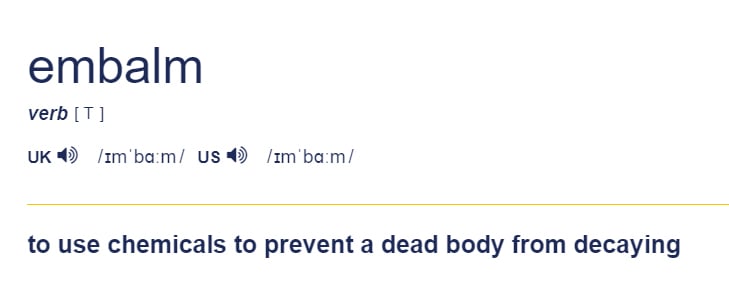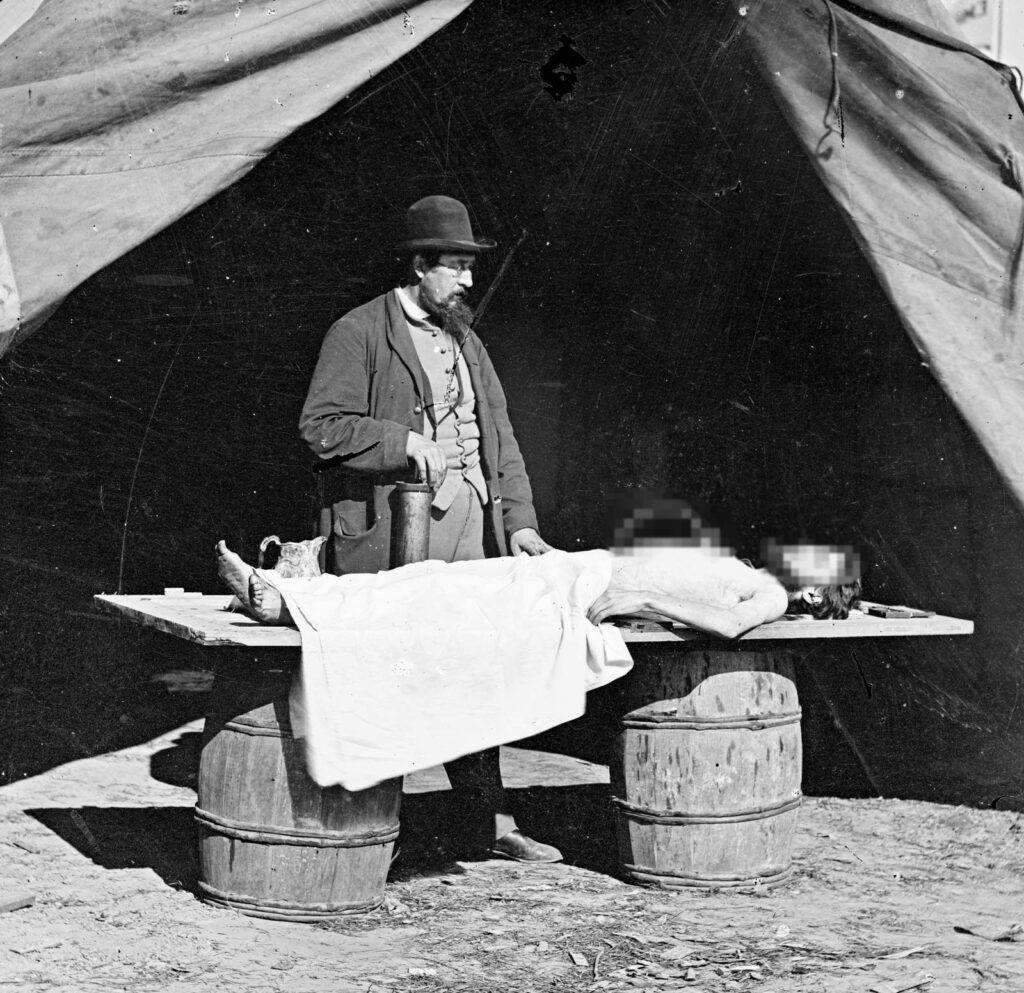Warning: The content and images found in the article might be sensitive to some. You are advised to continue at your own discretion.
According to the Cambridge dictionary, the act of embalming is ‘to use chemicals to prevent a dead body from decaying’. In other words, to embalm is to preserve; to maintain the body in its original state. In contemporary society, embalming is used so that bodies do not decay while the funeral is still ongoing, but it does not begin to touch on the lengths the ancient took to ensure corpses stay preserved. Embalming was a facet of the mummification process back then, which allowed these human remains to last till our time. With them, we could excavate and exhume from their tombs and learn about societies lost to the time.

However, in the modern world, mummification is outlawed and embalming— while still done to prevent decay— is less about preserving the body but restoration. There is now a difference in intention: to maintain the body versus to make the body appropriate for viewing. The discrepancies belaid in the beliefs regarding death and burials. The ancient Egyptians believed in life after death and that the physical body was necessary and had to be recognisable to the ba and ka (personality and life-force respectively). Hence, the bodies of pharaohs and other elites in the society were preserved in the hopes that their souls would then return to their physical forms and lead the nation to greatness again.
Hence, unlike the ancient religions, embalming is not necessitated in society yet continues to be practised today, unlike mummification. Problems plaguing countries, such as space constraints, have influenced the way some societies practice their beliefs. For death care, it is the result of a curious mix of capitalism and conflict. And in the case of embalming, politics was key.
The Demand for Embalming

The Plague of Ashdod by Nicolas Poussin, depicting a story from 1 Samuel as well as the plague in the 17th century.
Embalming was not a feature for most of European history unlike elsewhere in the world. For these societies—particularly the ancient ones—embalming primarily had religious motivations. Embalming however was absent in Europe and it was only during the Middle Ages and the Renaissance did embalming finally penetrated the western world.
With the many illnesses that plagued the people during this time period, with low life expectancy and high immortality rates. Furthering medicine and science was the priority. However, to study the human body, you would need to dissect it, and this could only be done post-mortem. The speed of which corpses deteriorated and became unfit for study thus necessitated finding ways to delay the decomposition process. Hence, embalming was born.
As mortuary science continued to progress, so did death care practices. By the 17th century, English physiologist William Harvey would have made headway into the study of physiology and anatomy. He is credited as having successfully described the systemic circulation in great detail. He found that by injecting chemicals into the arteries of the corpse would arrest its decay and preserve it for a little bit longer, allowing him to study the human body.

Richard Burr embalming an unknown soldier.
From the first time since chemicals were injected into the human body to prevent its decomposition, it would then take two centuries before embalmed bodies became normalised and entered funeral homes in doves.
It was only during the civil war era—in the 19th century—when there was a demand for bodies to be preserved; soldiers had to be sent back to their hometowns to be identified by family members. Up till that point, embalming was seen as a desecration of the corpse.
However, the civil war brought soldiers to lands far from home. This necessitated the embalming of the corpse lest they decompose before bereaved families have a chance to properly mourn. The civil war was, therefore, a catalyst in the normalising of embalming. Purely because it enabled the ritualistic mourning process performed by the grieving, and then became popular due to options it afforded at funerals: such as allowing the mourners to choose between close or open caskets. Without embalming, open caskets would have been too grotesque of an option for loved ones.
